In the 1990s, VR made its first foray into the mainstream. At least three PC HMDs made it to market and several console VR systems were built.
1990s – VR Explosion
1991 – Virtuality Dactyl Nightmare
Virtuality was the first VR Experience to be publicly available in video game arcades, as the price point of the computers required to draw even these simple 3D images were well beyond what any household could afford. These experiences were even networked together for multiplayer VR interaction:
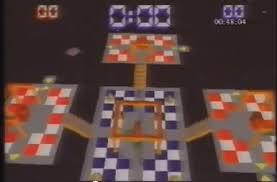
1993 – SEGA VR glasses
Sega announced the Sega VR headset for the Sega Genesis console in 1993 at the Consumer Electronics Show. The system included head tracking, stereo sound, and images drawn on two LCD screens. SEGA built four games for the system, but a high price point and lack of computer power meant the HMD never went into production:
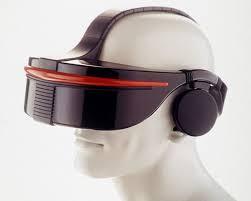
1995 – VRML – Virtual reality Markup Language
VRML is a text file format designed to link 3D worlds together, much like Hyper Text Markup Language (HTML) links pages together. Vertices, edges, surface color, UV mapped textures, and transparency for 3D polygons could be specified. Animated effects and audio could be triggered as well:
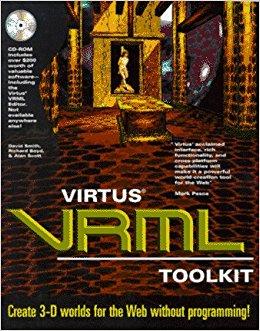
1995 – Nintendo Virtual Boy
The Nintendo Virtual Boy did not have any head tracking at all; it was a stereoscopic 3D display system that ran proprietary games that only had two colors: red and black. While several dozen games were released for it, the system was difficult to use comfortably and the experience could not be shared. The Virtual Boy was only on the market for two years:
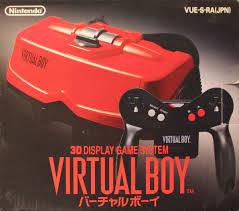
1995 – Hasbro Toaster
Hasbro, the toy manufacturer, had missed out on the console booms of the 80s and 90s and wanted to get into that very lucrative market. They designed a CD-ROM-based system powerful enough to run VR and built a VR prototype. After a great deal of money was invested, the system was never released, though the game Night Trap was built for the system. As the game was so expensive to produce, the developers salvaged what they could and released it for the Sega CD system:
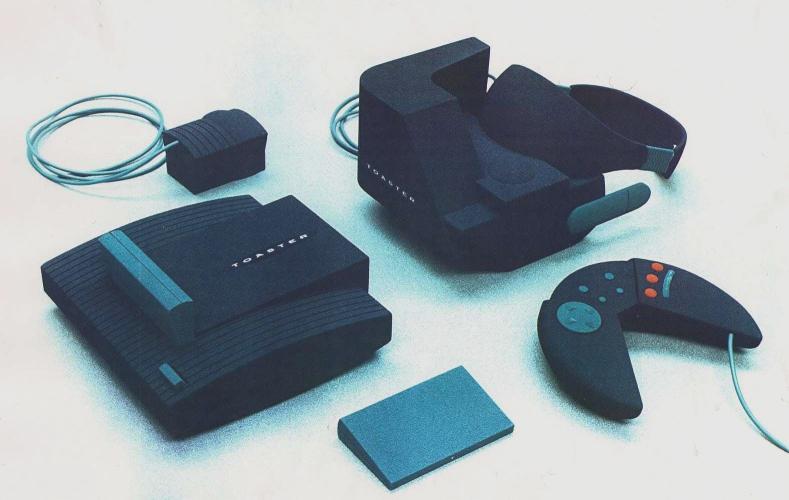
2013 – Oculus Rift
Palmer Lucky was able to leverage the never-ending demand for VR; the dramatic increase in PC processing power, the advent of low-cost, high-quality hobbyist hardware and circuit boards; the explosion of the large screen; high-resolution smart phone display, which is still the primary source of screens in HMDs and the raw power and acceptance of crowd-sourcing. This perfect storm of tech, money, ideas, enthusiasm, and execution allowed him to sell his company to Facebook for $2 billion.
Palmer deserves credit for re-creating the VR demand that has brought us Cardboard, Gear, Daydream, and HoloLens, which are all discussed in greater detail elsewhere in this book.
2014 – Google Cardboard
While Facebook invested $2 billion to bring Rift to the market, Google took a different approach. Google Cardboard is an HMD kit that contains two 40 mm focal distance lenses and a sheet of pre-folded die-cut cardboard. Rubber bands and Velcro strips are used to keep the device closed and support the user's mobile device. With a low price point, around $9.00, and simple design, VR finally made it into the hands of millions of users.
Since its initial release, knock-off brands have kept the price low and Google has developed educational materials for K-8 students across the U.S.
2015 – Samsung Gear VR
In 2005, Samsung obtained a patent to use a mobile device as a head-mounted display. This led to the release of the Gear VR in November of 2015. The Gear VR is designed to work with Samsung's flagship smartphones, with an integrated calibration wheel and trackpad for user interaction.
The Oculus-compatible Samsung device supports Motion to Photon (MTP) with latency less than 20 ms, optimized hardware and kernel, and higher-resolution rendering for the 96 degree field of view for the first three models, and 101 degree for the SM-R323 and beyond.
2018 – Magic Leap
Magic Leap is one of many unreleased HMDs, but, as it has the backing of Google to the tune of $2 billion and promises an AR experience far beyond that of the HoloLens, the system deserves to be mentioned, even though there is little to write about beyond some proof of concept videos.



